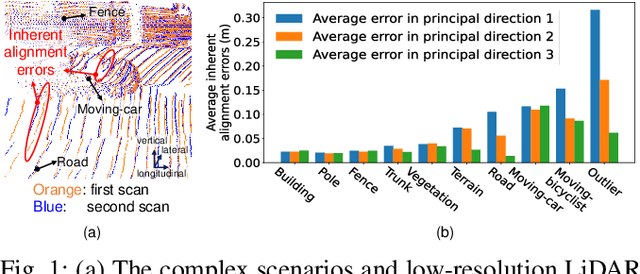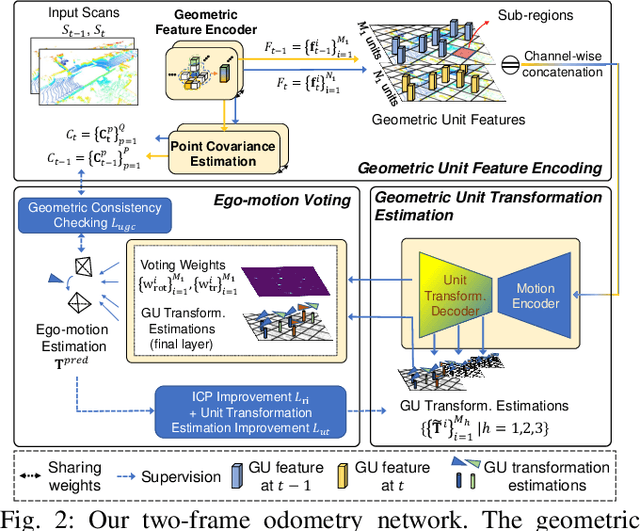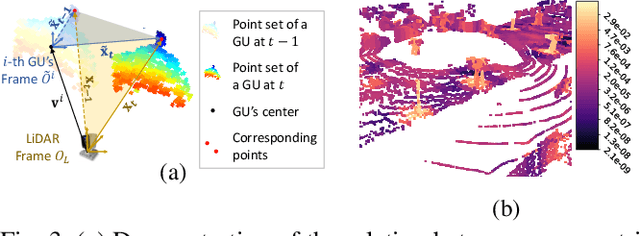Junyi Lin
3DAffordSplat: Efficient Affordance Reasoning with 3D Gaussians
Apr 16, 2025Abstract:3D affordance reasoning is essential in associating human instructions with the functional regions of 3D objects, facilitating precise, task-oriented manipulations in embodied AI. However, current methods, which predominantly depend on sparse 3D point clouds, exhibit limited generalizability and robustness due to their sensitivity to coordinate variations and the inherent sparsity of the data. By contrast, 3D Gaussian Splatting (3DGS) delivers high-fidelity, real-time rendering with minimal computational overhead by representing scenes as dense, continuous distributions. This positions 3DGS as a highly effective approach for capturing fine-grained affordance details and improving recognition accuracy. Nevertheless, its full potential remains largely untapped due to the absence of large-scale, 3DGS-specific affordance datasets. To overcome these limitations, we present 3DAffordSplat, the first large-scale, multi-modal dataset tailored for 3DGS-based affordance reasoning. This dataset includes 23,677 Gaussian instances, 8,354 point cloud instances, and 6,631 manually annotated affordance labels, encompassing 21 object categories and 18 affordance types. Building upon this dataset, we introduce AffordSplatNet, a novel model specifically designed for affordance reasoning using 3DGS representations. AffordSplatNet features an innovative cross-modal structure alignment module that exploits structural consistency priors to align 3D point cloud and 3DGS representations, resulting in enhanced affordance recognition accuracy. Extensive experiments demonstrate that the 3DAffordSplat dataset significantly advances affordance learning within the 3DGS domain, while AffordSplatNet consistently outperforms existing methods across both seen and unseen settings, highlighting its robust generalization capabilities.
Aligning Cyber Space with Physical World: A Comprehensive Survey on Embodied AI
Jul 09, 2024



Abstract:Embodied Artificial Intelligence (Embodied AI) is crucial for achieving Artificial General Intelligence (AGI) and serves as a foundation for various applications that bridge cyberspace and the physical world. Recently, the emergence of Multi-modal Large Models (MLMs) and World Models (WMs) have attracted significant attention due to their remarkable perception, interaction, and reasoning capabilities, making them a promising architecture for the brain of embodied agents. However, there is no comprehensive survey for Embodied AI in the era of MLMs. In this survey, we give a comprehensive exploration of the latest advancements in Embodied AI. Our analysis firstly navigates through the forefront of representative works of embodied robots and simulators, to fully understand the research focuses and their limitations. Then, we analyze four main research targets: 1) embodied perception, 2) embodied interaction, 3) embodied agent, and 4) sim-to-real adaptation, covering the state-of-the-art methods, essential paradigms, and comprehensive datasets. Additionally, we explore the complexities of MLMs in virtual and real embodied agents, highlighting their significance in facilitating interactions in dynamic digital and physical environments. Finally, we summarize the challenges and limitations of embodied AI and discuss their potential future directions. We hope this survey will serve as a foundational reference for the research community and inspire continued innovation. The associated project can be found at https://github.com/HCPLab-SYSU/Embodied_AI_Paper_List.
Robust Self-Supervised LiDAR Odometry via Representative Structure Discovery and 3D Inherent Error Modeling
Feb 27, 2022



Abstract:The correct ego-motion estimation basically relies on the understanding of correspondences between adjacent LiDAR scans. However, given the complex scenarios and the low-resolution LiDAR, finding reliable structures for identifying correspondences can be challenging. In this paper, we delve into structure reliability for accurate self-supervised ego-motion estimation and aim to alleviate the influence of unreliable structures in training, inference and mapping phases. We improve the self-supervised LiDAR odometry substantially from three aspects: 1) A two-stage odometry estimation network is developed, where we obtain the ego-motion by estimating a set of sub-region transformations and averaging them with a motion voting mechanism, to encourage the network focusing on representative structures. 2) The inherent alignment errors, which cannot be eliminated via ego-motion optimization, are down-weighted in losses based on the 3D point covariance estimations. 3) The discovered representative structures and learned point covariances are incorporated in the mapping module to improve the robustness of map construction. Our two-frame odometry outperforms the previous state of the arts by 16%/12% in terms of translational/rotational errors on the KITTI dataset and performs consistently well on the Apollo-Southbay datasets. We can even rival the fully supervised counterparts with our mapping module and more unlabeled training data.
 Add to Chrome
Add to Chrome Add to Firefox
Add to Firefox Add to Edge
Add to Edge